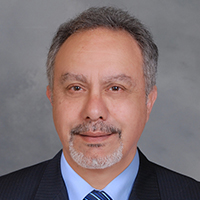Training: Exploitation of Tight and Unconventional Reservoirs
Saad Ibrahim, P. Engineer
(3 days) – TBA
Course Objective:
This course offers a detailed coverage of the techniques used in the exploitation of tight and the unconventional oil and gas reservoirs. Since massive resources are present in the unconventional oil and gas fields including Shale gas/oil, Coal Bed Methane (CBM) and tight sands, the oil industry is paving the way to exploit these resources; including bringing new technology and training their staff. Background information about the main differences between conventional and unconventional reservoirs are covered. In order to successfully evaluate the potential of these resources, the integration of the various techniques such as; engineering, petrophysical, geological, and geo-mechanical properties are utilized to determine their commerciality. Further, the technology of Multistage Fracing of Horizontal Wells (MFHW’s) should be carefully optimized to enhance the economics of the Unconventional. Methods of evaluating performance and reserves of the tight/unconventional reservoirs will be discussed including: Mini frac testing (DFIT), the flowing material balance, advanced type curve matching (Blasingame, Fetkovich), well testing (PTA) and Rate Transient Analysis (RTA). Interesting class studies using actual field data will reviewed. Review of EOR for the Unconventional will also be discussed. A course hand-out which is an excellent reference will be provided.
Cost: $2100 + (5% GST)

New payment method is available: E-Transfer to accounting@petromgt.com
In the note to the payment enter the name of the course and personal information.
Download Course Description (PDF)
Who Should Attend:
This course is aimed at reservoir, petroleum and exploitation engineers/technologists, geophysicists, and geologists who are involved in tight sand and unconventional field development and exploitation.
Course Instructor:
Mr. Saad Ibrahim, P. Eng,

president of Petro Management Group Ltd. Mr. Ibrahim has over 35 years of diversified experience in the oil and gas industry as a worldwide highly recognized engineering consultant and a distinguished instructor. He also completed a post-graduate program with the University of Calgary in Chemical and Petroleum Engineering. The focus of Mr. Ibrahim’s experience lies in the area of Reservoir management, EOR, and well test planning/analysis. Mr. Ibrahim is a member of APEGA and SPE.
Course Agenda:
Introduction to the unconventional
- Potential of the unconventional in North America and worldwide
- Comparison of engineering and geological characteristics of conventional and unconventional reservoirs.
Coalbed Methane (CBM)
- Background and history
- Factors that affect the commerciality of CBM.
- Geological/petrophysical characteristics
- Methods to estimate gas content and reserves
- Laboratory tests to estimate total organic content (TOC) and maturity
- Langmuir gas desorption isotherm for wet and dry CBM
- Production mechanism and well productivity estimate
- Uncertainties of formation evaluation
- Class problem example
Shale gas/oil
- Background and history
- Shale gas formation characteristics/description.
- Shale maturity and methods to determine type of hydrocarbon potential
- Geo-chemical laboratory tests to determine shale characteristics
- Pyrolysis analysis of Kerogen
- Typical well production profile
- Case study from the Horn River Field (Canada)
- Shale oil vs Oil Shale! (production mechanism)
Tight sands
- Background and history
- Extend of potential reserves of tight sands.
- Geological description
- Exploitation of tight sands; primary and secondary
Multi-stage Fracture of Horizontal Wells (MFHW’s)
- Benefits/applications of horizontal wells
- Review of the technique of MFHW’s and frac design optimization including:
- Hz well spacing
- Frac size and the number of frac stages
- Open hole vs. cased hole completion/fracturing
- Taking advantage of the sweet spots – quantifying
- Modeling uneven uneven frac geometry and dual porosity
- Case studies
Applications of Mini Frac or DFIT
- Benefits/applications of Diagnostic Fracture Injection Test (DFIT)
- Pre and post closure analysis
- Identification of leak-off types and fracture characteristics
- Case studies
Evaluation tools of tight sands/unconventional vs conventional reservoirs
- Review basic concepts of reservoir evaluation, such as flow geometry and boundary conditions.
- Review of the principles and applications of the well test analysis techniques for conventional and tight sands
- Rate Transient Analysis (RTA) tools (Type curve matching, flowing material balance, Normalized rate, etc..)
- Case studies
Tips on Hydraulic Fracturing:
- Well fracability, and rock geo-mechanical parameters
- Frac stages: spearhead, frac pad, proppant, frac flush
- Flow-back and draw-down limits (case study)
- Hybrid frac and zipper frac
- Frac divertors and frac hits
- Frac hydration and refract techniques
Reserves Determination
- Volumetric, material balance, and probabilistic methods (class example)
- Use of Arps and advanced type curve analysis for tight formations
- The use of flowing material balance technique
- The use of “Well Typing” and statistical analysis to evaluate uncertainties, and to generate P90, P50, and P10 production forecasts and reserves.
- Use of new numerical techniques to estimate Stimulated Reservoir Volume (SRV) and Contacted Reservoir Volume (CRV), commonly used for reserves booking of tight sands and unconventional formation
- Case studies
Enhanced oil recovery (EOR) for tight sand and unconventional
- Common techniques used for EOR for the Unconventional
- Challenges in the EOR for the Unconventional
- Techniques used to reduce water/gas breakthrough
- Review of waterflood application for tight sands using MFHW’s
- Application of CO2 Huff-n-Puff process
